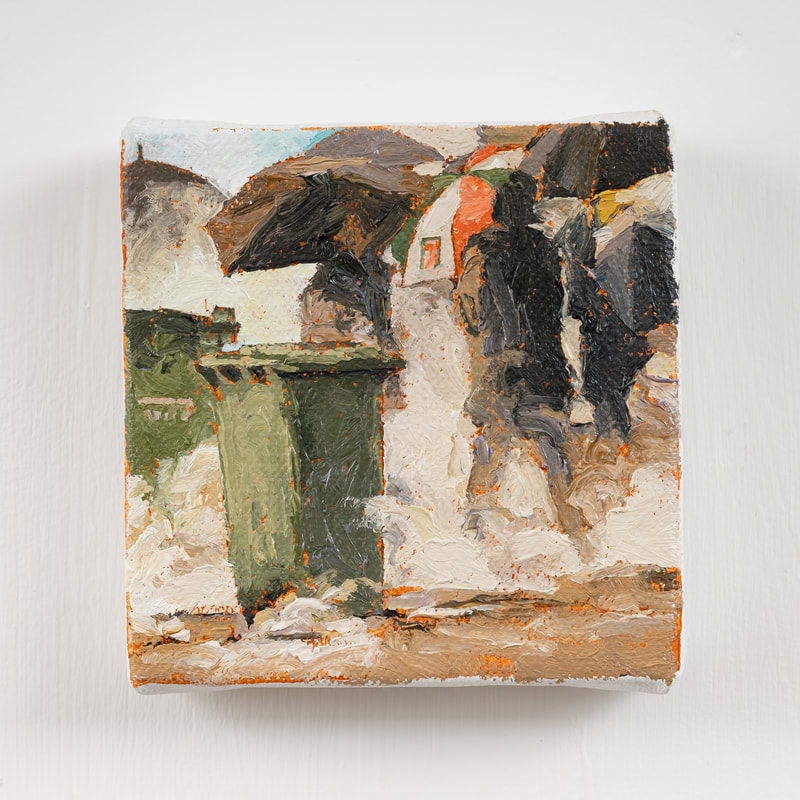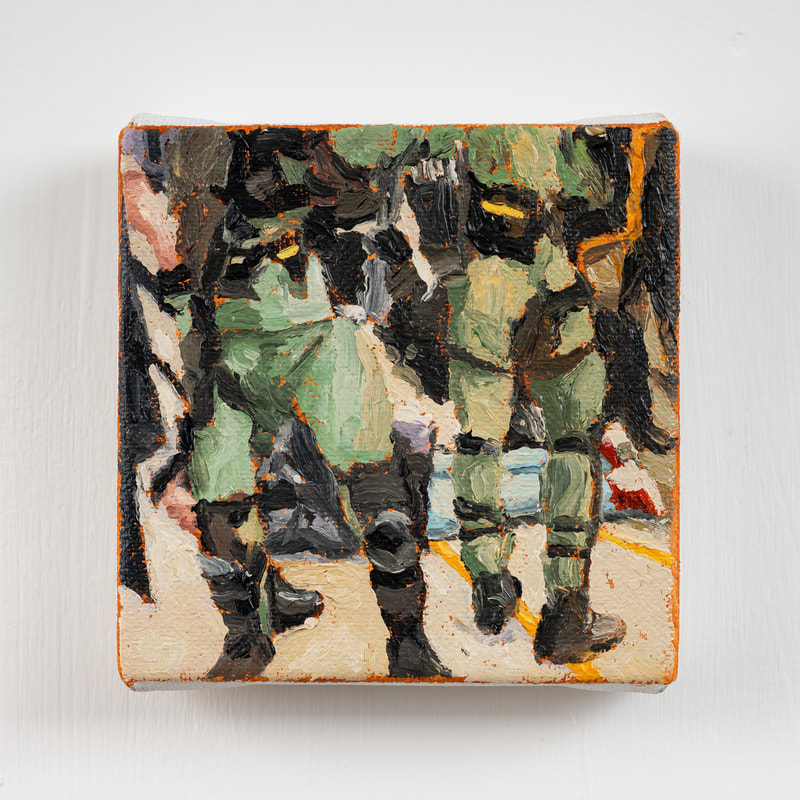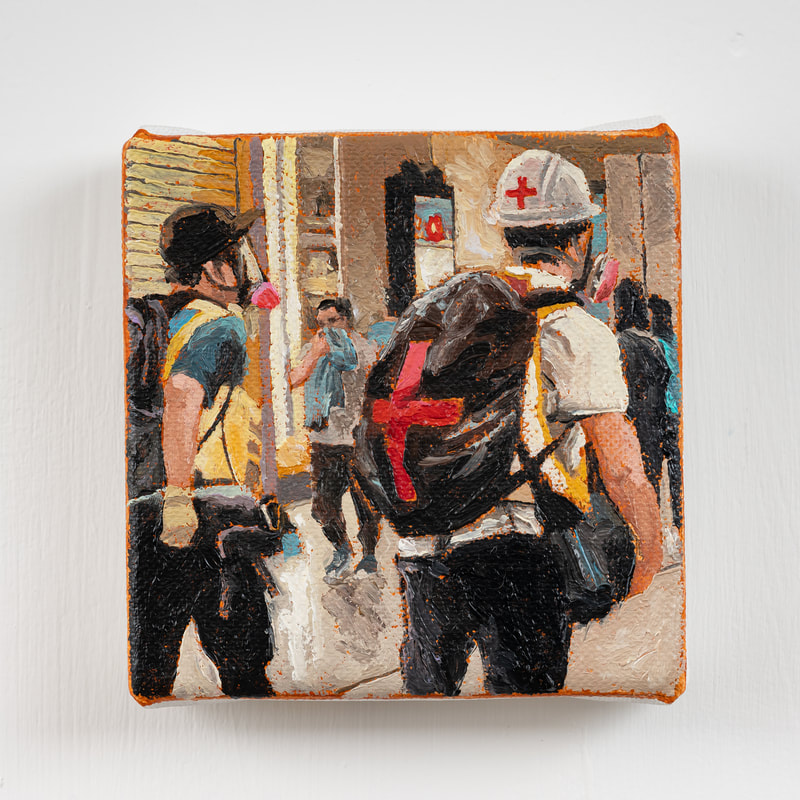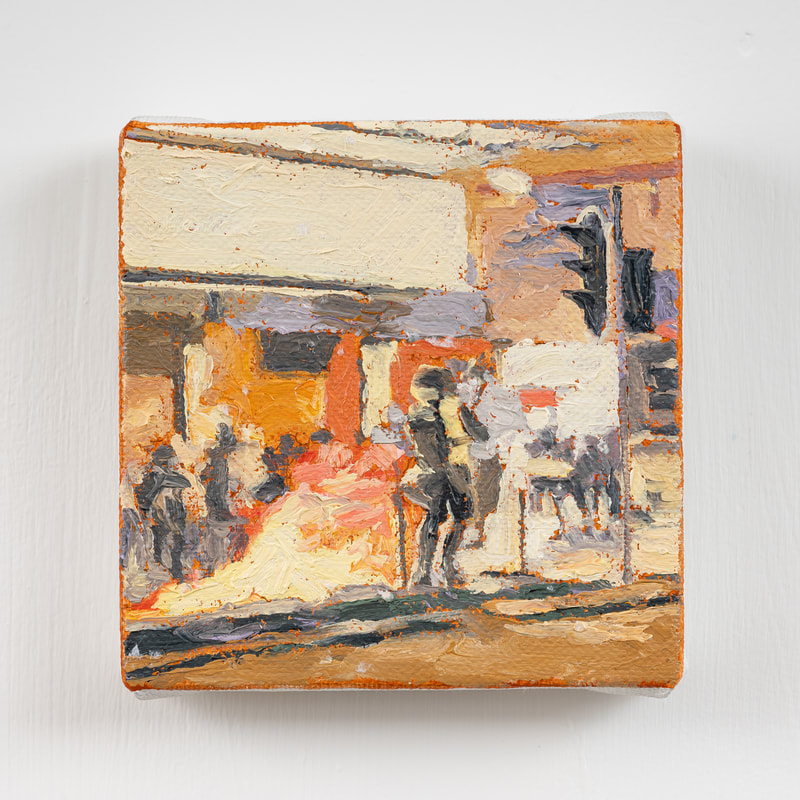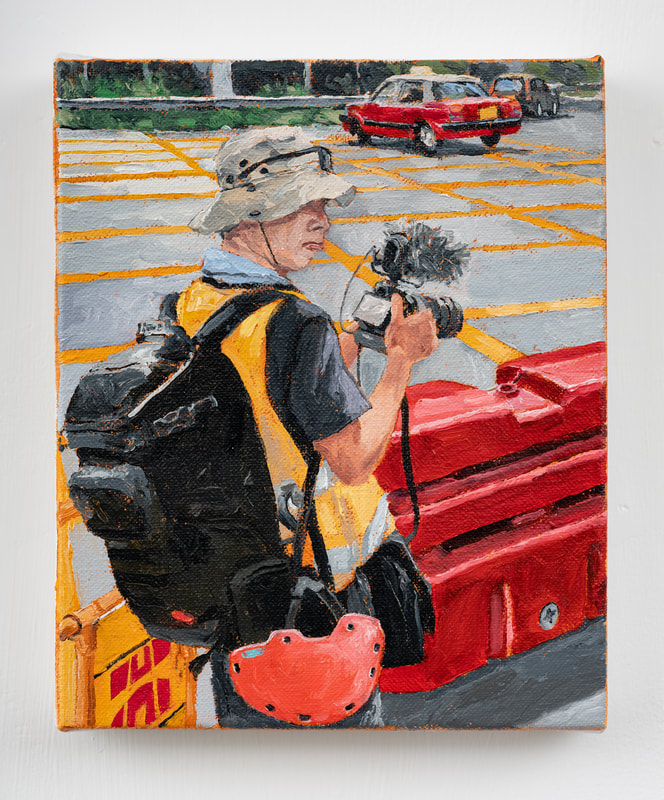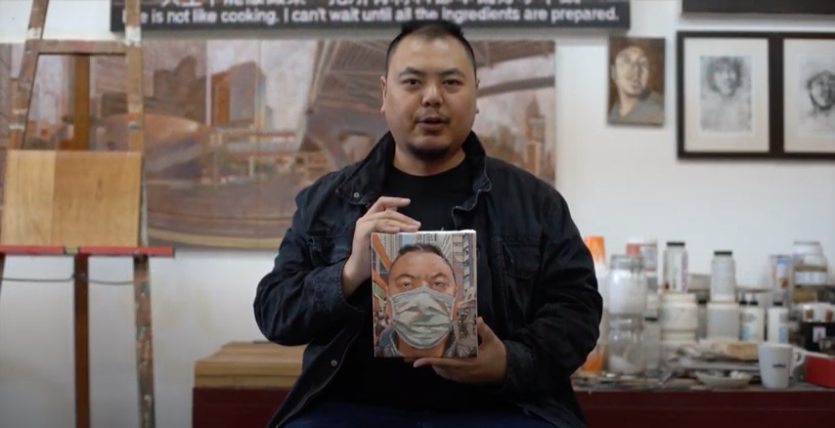CHOW Chun fai: Portraits from behind 《背影》
|
|
CHOW Chun Fai: Portraits from Behind 周俊輝《背影》 14 March – 13 June 2020 Opening: Saturday, 14 March 2020, 2 - 5 pm For this exhibition, the Hong Kong-based artist has produced a series of mostly small-format paintings. Taken together, the works portray a city in crisis: they show scenes from the mass protests, violent clashes and indiscriminate arrests that shook the artist's hometown in 2019. Like much of CHOW's previous work, his new paintings revolve around the question of Hong Kong's identity. For what is probably his best-known series, "Painting on Movies", the artist selected scenes from local and international films and painted them together with the corresponding subtitles. Many of the resulting pieces allude to the former British colony's struggle for belonging after the 1997 handover. "Portraits from Behind" deals with the same quest for identity and self-determination, but it represents a very different approach from that of the earlier series. Like many other Hongkongers, CHOW was left deeply disturbed and shaken by the events of 2019. Unable to focus on his projects, he started to paint scenes from the protests as a way to process his emotions. Compared to the carefully planned statements of "Painting on Movies", CHOW's new works are more spontaneous. Based on photos and other image sources such as live streams, they have an almost documentary quality to them. In the only large painting in the exhibition, a two-metre-wide panorama of the mass protests at Hong Kong's international airport in August 2019, the crowd is portrayed in a strictly factual way. The remaining paintings are much smaller and can be divided into two distinctive groups. The slightly larger, upright formats show scenes that are more concrete and detailed. Looking at these paintings, we often find ourselves on the periphery of events. Taking on the role of observers, we look over the shoulders of frontline reporters, protesters and riot police. Violence and injustice almost always remain out of our sight, but the sense of danger is palpable. The other group of works consists of square formats measuring just ten by ten centimetres. They are often more loosely painted, with some of them having an almost impressionistic quality to them. In many of these paintings, persons are either completely absent or only seen as silhouettes against a red backdrop. We glimpse shadows wading through clouds of gas, objects engulfed in flames and vague figures trying to shield themselves against projectiles. Despite their small size, these works powerfully evoke a tormented city on the brink of collapse. CHOW's paintings of the protests offer neither context nor explanation. Instead of forcing an interpretation onto the viewer, they adopt a street-level perspective. We witness the clashes like ordinary Hongkongers would if they suddenly found themselves in a tense and rapidly escalating situation. Overwhelmed and with nothing but glimpses of the unfolding events, we must piece the fragments of information together by ourselves. In their immediacy and directness, CHOW's paintings resemble the quick social media snapshots shared by citizen journalists during the protests. Committing those scenes to canvas, however, lends them a heightened sense of urgency. They make clear that something very important has changed, something that must never be allowed to slip into oblivion. Related Articles:
|
